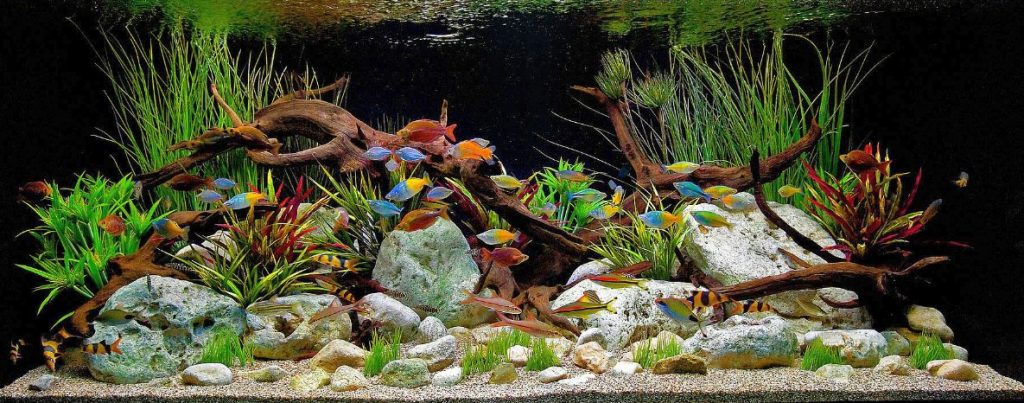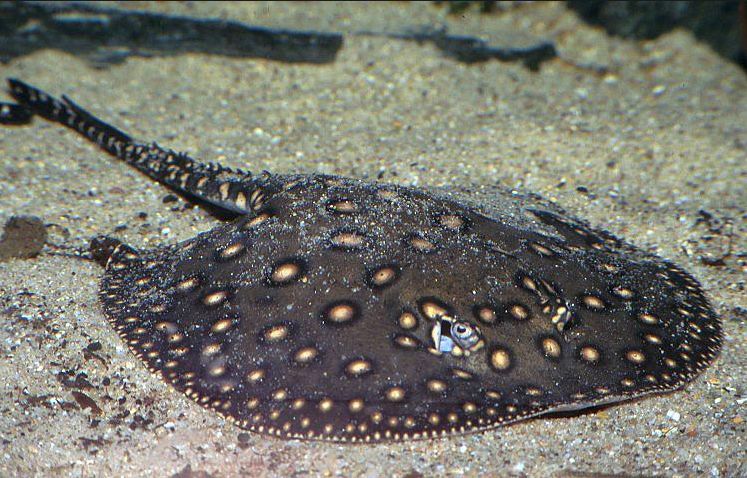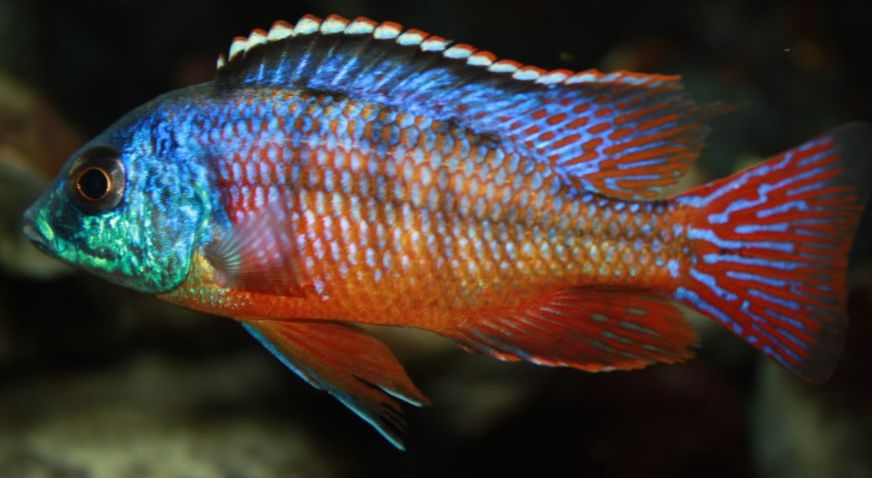
Researchers in some 13 books I read on animal nutrition have found that ALL juvenile fish need four things in their food for optimal growth
- a protein level of at least 40% and preferably over 50%
- a fat level of at least 10%
- that two of the first three ingredients be either “whole fish” of some sort or “fish meal” of some sort (crushed bone = calcium source)
- avoid anything with “soybean”, “potato protein” or “wheat gluten” as more than 40% of the protein. These are plant proteins that lack two essential amino acids.
This is for the absolute “optimal” growth of ONLY juveniles. Adults of ALL fish species do fine without these four points being fulfilled.
And this is for ALL fish species. It turns out tropical fish, carnivores, or “herbivores”(there are no true herbivores in the aquarium hobby) do not need differing diets. The thirteen books the author read on fish food research showed that catfish, carp, tilapia, trout etc. had very similar dietary needs. There were differences if one is concerned about cost to raise a food fish. But they don’t apply in an aquarium setting. The reasons for this are gone into in the link below:
3.1. Insignificance of Food

Fish Specialization
When you talk about what food fish eat it turns out that one cannot categorize a fish as a given type. There are hundreds of specializations within the fish world when it comes to diet.
For instance, the mbuna Labidochromis graze the periphyton in Lake Malawi but their teeth are strainers, and they eat the small animals in the algae strands, not the algae. Technically this makes them a “carnivore”. Another mbuna, the Labeotropheus, eats the whole periphyton, animals, and algae and is more properly called a “grazer”. Some fish like the goldfish eat anything and are called “Omnivores”. Note there are no true herbivores like grass carp in the aquarium hobby.
Note also that there is a difference between the protein found in the vegetable matter of periphyton and the protein found in the likes of soybeans, wheat gluten, and potato protein. The periphyton protein is a “complete” protein with all essential amino acids. the cheap vegetable protein lacks two essential amino acids. Green vegetables such as spinach and algae have a “complete” protein composition.

Carnivore
The standard “fish” that we normally think about is a meat-eating carnivore (more specialized forms of a carnivore are the piscivore and the insectivore). These fish have a large mouth relative to their body size and swiftly pursue shrimp, crustaceans, insect larvae, and small fish in open waters, eating on an irregular basis. These are epitomized by the “predator haps” of Lake Malawi.
Carnivores eat a lot of protein and very little carbohydrate. So logically the diet of any “carnivore” should be as high in protein as possible. It turns out that a diet of at least 50% protein will result in the fastest growth of juvenile tilapia. But this is fraught with difficulties. Is a fish that grows fast necessarily the healthiest or the most colorful fish? There appears to be no paper and no data clarifying that point.

Grazers
Another type of fish has a small mouth size relative to its body size, is relatively slow, and spends its day grazing from plants and rocks. Most people call these “herbivores”. Some call them “limnivores” or “phytovores”. Technically they should be called “grazers”, which is the term used herein.
There is a myth that says that grazers are solely vegetable matter eaters. Grazers are not strictly herbivores or vegetarians. Grazers eat a lot of animal protein in addition to a lot of plant protein. Very few fish are pure herbivores (i.e. the grass carp).
The type of material grazers eat is the green/brown fuzzy algal blanket that coats every solid surface in a sunny aquatic environment. This blanket is more properly described by the scientific word “periphyton” or the German word “aufwuchs”.

Periphyton is a complex mixture of algae (green algae, cyanobacteria, and diatoms), crustaceans, rotifers, bacteria, protozoans, insect larvae, oligochaetes, tardigrades, and detritus (dead material) that is attached to submerged surfaces in most aquatic ecosystems. This periphyton is very roughly 1/3 algae, 1/3 a complex montage of micro-organisms, and 1/3 dead algae. These organisms have food values that can be found on the internet.
Putting the result into a very rough table based on dry weight is helpful:

So, as you can see, grazers eat very little digestible carbohydrates (10%) in their native waters and eat a lot of protein (55%) and indigestible fiber (22%) as a percentage of dry weight. So, to the surprise of many, logically “grazers” need high protein diets. Almost all “grazers” are technical “omnivores”.

There is a myth that grazers get bloat from high protein because they don’t eat high protein in the wild. As the above shows, this is not true. People are beginning to realize that bloat is probably due more to high carbohydrates and lack of roughage than high protein. This is supported by one well run study.
More on this subject can be found by clicking the following link:
3.8. Food and Lake Malawi Bloat
.
Omnivores
Some fish can eat periphyton and pursue live prey. These omnivores include the livebearers (swordtails, platys, guppies, and mollies), barbs, gouramis, and bettas. Still, other fish (catfish, loaches, carp) are bottom feeders which means they are also omnivores (technically limnivores). These omnivores are very flexible in their diet.

Food and Growth Rate
What must be emphasized here is that fish are cold-blooded creatures which grow in proportion to the amount of food they digest. So, let’s say we set up two aquariums and stock them with the same number of six-gram juvenile Malawi cichlids. One aquarium gets 2% food by weight fed to the fish and one aquarium gets 4% food by weight fed to the fish daily. In one year, the fish in the first aquarium might weigh 9 grams and the fish in the second aquarium might weigh 12 grams. The fish in both aquariums will probably be equally healthy.
The same effect will take place if the fish in the first aquarium is fed a hard-to-digest food such as algae and the fish in the second aquarium are fed an easy-to-digest food like fish filet. This difference in growth rates is important if you are raising tilapia for sale. It is much less important in the aquarium.

“Rules” on Food
There are two “food rules” for feeding freshwater aquarium fish. The food should have more than 30% protein and the food should be less than 50% carbohydrates by dry weight. Unfortunately one needs to add up the analysis % on most packages: protein %, ash %, fat %, and moisture %, and subtract this number from 100% to get the percentage of the food which is carbohydrate. These two rules are the only “food rules”.
.
Fish Food “Rules”: More than 30% protein and less than 50% carbohydrates by dry weight
.
Note that I personally simply buy fish food that has the highest protein level I can find. I do that not because of the fish requirements. Rather I do that to have a healthy aquarium due to a low carbon to nitrogen ratio. This is analyzed further in this article:
3.9. Fish Food and Brown Gunk
Now there are many, many pages of “analysis” by self-appointed experts on fish food on the web. These analyses invariably use a whole lot of very big words that the authors clearly don’t understand. If one takes these analyses apart you find they are inaccurate in all cases. They take an incredibly complex topic that has had whole books are written about it (thirteen such books were used to put together this article) and tries to condense it into a few pages of what is well-meaning but erroneous beliefs.

Still, others take various notions about human nutrition and try to apply them to fish. It is human nature to practice this sort of “anthropomorphism”. But a fish is a completely different animal with a much different digestive process than humans.
The number of folks who add garlic to their fish food is astounding. The sulfurous compounds in garlic are designed to deter animals from eating the bulbs. So fish do NOT prefer garlic laden food. But “confirmation bias” will take over and everyone, and I mean EVERYONE, will think their fish eat garlic laden food in preference to regular food.
For those wanting more data on the many myths about fish food click on this link:
3.7. Banned Food
The myth of a correlation between high protein diets and Malawi Bloat is examined in this link:
3.8. Food and Malawi Bloat

Return to Fish Food Menu
.
Aquarium Science Website
The chapters shown below or on the right side in maroon lead to close to 400 articles on all aspects of keeping a freshwater aquarium. These articles have NO links to profit-making sites and are thus unbiased in their recommendations, unlike all the for-profit sites you will find with Google. Bookmark and browse!
.

Dave says
In reply to AE …. Only the thirteen books I read which used all sorts of foods for all sorts of fish. The dietary needs of catfish are very similar to tilapia which are very similar to trout. Do some fish digest some things like carbohydrates better than other fish …. yes they do. But the fish in your aquarium are not living on the edge like they do in the wild so it makes no difference in an aquarium. And you are not raising your fish for profit so the small differences are of no consequence.
AE says
“ It turns out tropical fish, carnivores, or “herbivores” do not need differing diets.”
Can you cite the source of where you learned of this?